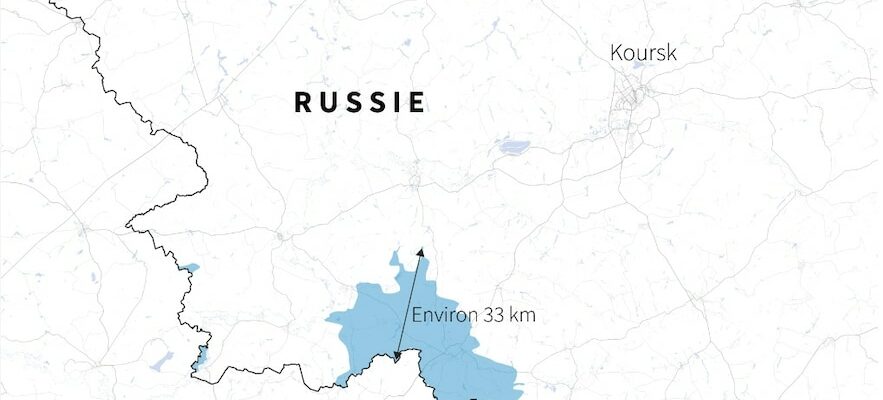In the midst of Olympic euphoria, a performance of another kind amazed millions of Ukrainians on August 6. The images of their soldiers marching on Russian soil, facing a stunned adversary, boosted their morale. Russia had never suffered such an affront since the Second World War. Fifteen days later, Kiev’s army claimed to have taken more than 1,200 kilometers towards Kursk, more than its enemy had conquered in nine months. Enough to see the future, darkened since the failed counter-offensive of the summer of 2023, in a completely different light. In theory…
Because the Ukrainian generals’ gamble – to force the enemy to redeploy part of its troops mobilized in the Donbass towards Kursk – is far from being won. On the contrary, Russia is trying not to thin out this strategic front and is instead relying on conscripts and a set of heterogeneous groups, including a few elite soldiers sent from the Kharkiv area. In the Donbass, the army continues to slowly but surely gain a kilometer per week.
Russia: Ukrainian offensive in the Kursk region
© / afp.com/Valentin RAKOVSKY, Cléa PECULIER, Paz PIZARRO
Pokrovsk is now in danger of falling: kyiv ordered the evacuation of the city and its surroundings on August 19. “The fall of Pokrovsk, a defensive fortress and a commercial and logistical crossroads for supplying troops, would be a serious blow,” observes Jade McGlynn, a researcher at King’s College London, based in Kharkiv. “It’s not inevitable, but things are looking bad. Some Ukrainian soldiers engaged on this front are frustrated that elite brigades are being sent to the Kursk region.”
kyiv faces a strategic dilemma
This is kyiv’s headache: retreat into Russia, after the masterstroke of August 6; or cling to this war chest, at the risk of losing its best elements and witnessing, in the south, the capture of Pokrovsk and the inexorable loss of Donbass. “The Ukrainian army is facing a real strategic dilemma, notes General (2S) Jérôme Pellistrandi, editor-in-chief of the Revue Défense nationale. It must find the right balance to keep enough square kilometres in Russia to remain credible… without exhausting its forces.”
For the time being, Ukraine is leading these two major campaigns simultaneously, a high-risk situation. In this unprecedented configuration, Zelensky’s army has a weak point: it is struggling, more than its neighbor, to rebuild its troops. Its anti-aircraft defense, still insufficient, is not helping it to preserve its men. Hence the Ukrainian president’s appeal to his Western partners for more help, faster. “War knows no vacations,” he hammered home on August 18. “The offensive in Russia is a gamble for Zelensky,” explains Léo Péria-Peigné, researcher at the Center for Security Studies at Ifri. His goal is to obtain the best position before entering into negotiations because the winter is looking difficult, after the Russian strikes on the Ukrainian energy network.”
The moment is crucial for kyiv. And the news from outside is not good. Germany, the country’s second largest supporter after the United States, is going to halve its military aid. Starting next year, this budget will drop from 8 to 4 billion euros. A cut that comes at the worst possible time. “Unfortunately, the West has no strategy for Ukraine’s victory, nor even the capacity to agree on the means to achieve it,” laments Jade McGlynn. “And if they fail to secure these skies, kyiv will end up losing.” The responsibility of its allies would be immense.
